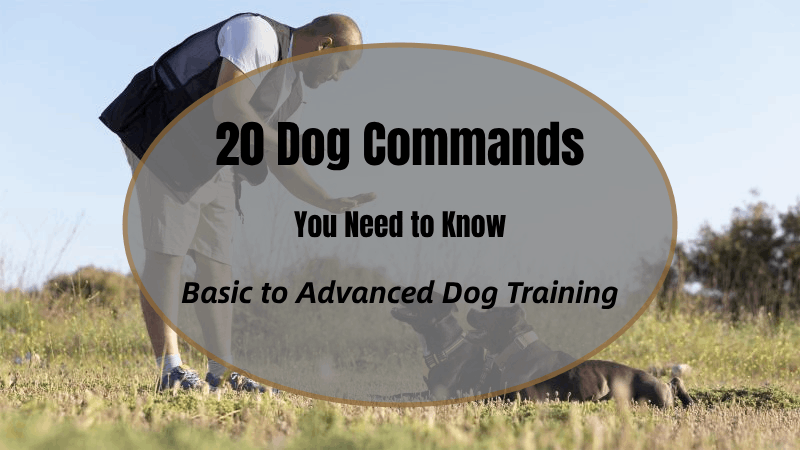
How To Craft A Cozy Cat Vest From Fabric Strips
Have you ever seen your feline friend lounging around and thought, “What could possibly make this picture more adorable?” The answer is simple: a cat

Welcome to a comprehensive guide, meticulously crafted to navigate you through the delightful journey of dog training. Whether you’re a new dog parent or an experienced trainer looking to polish your skills, this guide promises insights that bridge basic training to advanced training dog command mastery.
Understanding Canine Communication
To communicate effectively with your furry friend, you must delve into the various channels through which they express themselves.
Dogs utilize a rich tapestry of vocalizations and physical cues to convey their feelings, desires, and apprehensions. Paying attention to their barks, whines, tail movements, ear positions, and facial expressions is crucial.
Recognizing when a bark signifies excitement versus distress or identifying the subtle differences between a relaxed and a fearful posture, for instance, will empower you to respond aptly and build a strong, communicative relationship with your dog.
Establishing Leadership and Trust
Embracing a leadership role in the eyes of your dog doesn’t entail instilling fear, but rather establishing a bond founded on trust, consistency, and positive reinforcement.
Dogs thrive in environments where boundaries are clear and predictable. Your role as a leader includes setting those boundaries, rewarding positive behavior, and providing comfort and safety.
Adopt a training approach that reinforces your position as a guide and protector, fostering a trusting relationship. Trust begets loyalty, and a loyal dog is not only a joy to train but also a lifelong companion.
Consistency and Patience in Training
Training a dog is akin to embarking on a journey where consistency and patience become your most treasured companions. Dogs learn through repetition and reinforcement. Consistent application of rules and commands, coupled with patience, ensures that the desired behaviors are ingrained and recalled even in your absence.
The consistency in your commands, reward systems, and responses to behaviors allows your dog to understand and predict outcomes, creating a stable learning environment. Conversely, patience is pivotal in managing the inevitable hiccups that punctuate the training journey, ensuring that frustrations do not impede progress.
Embarking on the journey of dog training introduces owners and their furry companions to a world where communication, obedience, and fun intertwine. Whether ensuring good behavior, executing crucial tasks, or simply enjoying playful moments, dog commands cater to a spectrum of needs.
| Category | Command | Description |
| Dog Behavioral Management (Basic Dog Commands) |
Sit | Fundamental for various interactions, ensuring composure. |
| Stay | Essential for control and safety, especially in hazardous situations. | |
| Heel | For controlled walks and attentive positioning by your side. | |
| Quiet | To manage excessive barking and maintain peace. | |
| Come | Ensures return upon command, reinforcing safety and control. | |
| Safety and Emergency (Basic Dog Commands) |
Stop | Life-saving command to prevent approaching danger. |
| Back | Move away from potential threats or breakables. | |
| Leave it/Drop it | Cease holding or engaging with harmful items. | |
| Find/Track | Locate items or people, useful in emergencies. | |
| Guard/Watch | Engage protective instincts for security. | |
| Fun and Engaging Tricks (Advanced Dog Commands) |
Fetch & Retrieve Specific Items | Enhance playtime and utility. |
| Play Dead | Entertaining and useful in deterring threats. | |
| Roll Over | Fun physical activity for exercise and entertainment. | |
| Spin/Turn | Promote physical activity and enjoyment. | |
| Service and Assistance (Advanced Dog Commands) |
Open/Close Doors | Autonomy for assistance dogs in doorways. |
| Bring a Tool | Retrieve specific items as service companions. | |
| Help | Respond to emergencies or activate emergency systems. | |
| Alert | Signal specific events, beneficial for therapy/service dogs. | |
| Interactive and Social Tricks (Advanced Dog Commands) |
Wave/Hi-5 | Interactive greetings for social interactions. |
| Speak/Whisper | Controlled vocalizations for playful or silent commands. |
This curated list of commands, from basic to advanced, serves not only as a guide to facilitate multifaceted training but also as a conduit to enhance the bond between you and your dog, ensuring a relationship that’s harmonious, engaging, and above all, founded on mutual understanding and respect. Additionally, mastering these dog commands can play a crucial role in emergency situations, such as during floods safety or other safety hazards, where prompt obedience can be lifesaving.
Training your dog serves not just obedience but also constructs a vibrant, fulfilling life for your canine pal. Through continuous training, you ensure not only good behavior but also foster a stronger bond and provide essential mental and physical stimulation.
The Benefits of Continuous Training
Going beyond the initial learning phases, continuous training solidifies behaviors and commands while keeping your dog mentally active and engaged. It’s not just a training phase but a lifelong commitment to aiding your dog in persistently adapting and positively interacting with their surroundings.
Building a Stronger Bond Through Interaction
The training journey, marked by learning and interaction, forges a solid bond between you and your dog. Your constant presence as a guide establishes a deep-rooted trust and respect. Through consistent interaction, a connection burgeons, grounded in mutual understanding and empathy.
Ensuring Mental and Physical Stimulation
Training provides essential mental and physical stimulation for your dog, offering mental challenges alongside physical activities. This blend of mental and physical engagement promotes comprehensive well-being, ensuring your dog is healthful, happy, and active throughout their life.
Effective dog training necessitates not only dedication and patience but also an astute understanding of canine psychology and the application of proven training tools and methodologies.
Choosing the Right Dog Training Tools
Implementing proficient training tools is paramount in administering effective training sessions:
Moreover, incorporating a tool like the Dog Chase Toy enables trainers to harness a dog’s prey drive constructively. This tool can be particularly effective in training sessions related to recall, impulse dog control, and agility training, offering a fun yet structured medium for exercise and learning. Additionally, the toy can be utilized to build and reinforce command structures such as ‘stop’, ‘fetch’, and ‘release’.
Developing a Training Schedule
Formulating a structured training schedule involves understanding canine attention spans and optimal training durations. Young puppies typically have shorter attention spans, making frequent, short sessions (5-10 minutes for very young pups, gradually increasing as they mature) more effective.
For adult dogs, maintaining sessions under 15 minutes while increasing the complexity and challenge of the tasks can optimize engagement and learning retention.
Adapting to Your Dog’s Learning Curve
Adept trainers understand that every dog’s learning curve is idiosyncratic, requiring flexibility in training strategies. Cognitive ethology, understanding the mental processes and behaviors of dogs, enables trainers to identify learning hurdles and modify approaches accordingly.
It may involve breaking down commands into simpler steps, introducing training aids, or utilizing tools like the Dog Chase Toy to merge playful elements with structured learning, enhancing the palatability of training sessions.
Integrating advanced canine behavioral science with appropriate tools creates a robust, effective training regimen, ensuring your canine companion not only attains desired behaviors but also relishes the learning journey.
Effective dog training is not merely for tricks and commands; it’s also a fundamental tool in rectifying and managing behavioral issues. Through strategic training, we can mold positive behaviors and mitigate undesirable ones, ensuring a harmonious relationship between pet and owner.
Addressing Aggression Through Commands
Handling how to calm an aggressive dog requires a multifaceted approach, which combines understanding the root cause (fear, dominance, territoriality, etc.) and leveraging training to manage it.
Implementing commands like “Leave it,” “Stay,” and “Quiet,” provides control in situations that may trigger aggressive behaviors. Additionally, utilizing a “Place” command, where the dog is trained to go to a specific spot and stay there, can also diffuse tense situations, providing a structured response to aggressive stimuli.
Always ensure that aggression management is addressed with utmost caution, considering the safety of the trainer, the dog, and others.
Mitigating Excessive Barking and Whining
Excessive vocalizations such as barking and whining often stem from underlying issues like anxiety, boredom, or attention-seeking.
Training dog commands like “Quiet” or “Enough” can be instrumental in managing these behaviors. The process generally involves allowing the dog to bark a few times, then issuing the command followed by a reward upon compliance.
Furthermore, ensuring that your dog’s mental and physical stimulation needs are met, by incorporating interactive toys or engaging in playful activities, can mitigate the roots of excessive vocalization.
Preventing Destructive Behaviors
Destructive behaviors, often a manifestation of unmet physical or mental stimulation needs, can be mitigated through targeted training and adequate enrichment.
Implementing a robust “Leave it” command can provide immediate control over destructive actions in progress. Simultaneously, ensuring that your dog is engaged with adequate physical exercise and mental stimulation, such as puzzle toys or interactive play sessions using tools like the Dog Chase Toy, can preclude the emergence of destructive behaviors by addressing their root causes.
Furthermore, training dog commands like “Drop it” help to ensure that the dog immediately stops and releases whatever object they may be destructively engaging with.
Books and articles from acclaimed dog trainers and behaviorists can provide invaluable insights for both novice and experienced dog owners alike. Works from renowned experts like Patricia McConnell, Victoria Stilwell, or Cesar Millan offer a wealth of knowledge on dog psychology, behavior, and innovative training techniques.
These reads offer a plethora of advice, ranging from addressing behavioral issues to exploring advanced training methodologies.
As you and your dog advance through your training journey, exploring more intricate and advanced training methods, like agility training, scent discrimination, or even therapy dog training, can be incredibly rewarding.
Engage with specialized clubs or groups and consider enrolling in advanced courses that delve into specific training specialties. Employ tools like the tactical dog harness to gradually introduce your dog to advanced activities, ensuring they are consistently challenged, stimulated, and joyfully engaged in their training sessions.
By embracing the journey of dog training with open arms, persistent learning, and boundless enthusiasm, you and your canine companion will embark on a lifelong adventure that enhances your bond, ensures optimal behavioral management, and fosters a happy, enriched life for your four-legged friend.
Remember, every step, every mishap, and every triumph is a moment to be cherished in this beautiful journey.


Have you ever seen your feline friend lounging around and thought, “What could possibly make this picture more adorable?” The answer is simple: a cat

The moment you consider a dog hunting vest for your adventurous companion, you’re stepping into a world where safety meets functionality. This vest is not

The concept of a dog cooling vest is a game-changer for pet owners looking to enhance their dog’s comfort during those relentless summer days. Imagine

When you first consider crafting a tactical dog vest, it’s not just about embarking on a fun DIY project; it’s about ensuring your furry companion’s

Have you ever seen your feline friend lounging around and thought, “What could possibly make this picture more adorable?” The answer is simple: a cat

The moment you consider a dog hunting vest for your adventurous companion, you’re stepping into a world where safety meets functionality. This vest is not

The concept of a dog cooling vest is a game-changer for pet owners looking to enhance their dog’s comfort during those relentless summer days. Imagine

When you first consider crafting a tactical dog vest, it’s not just about embarking on a fun DIY project; it’s about ensuring your furry companion’s
Secure and Empower, Walk Responsibly
Copyright © 2025pettacticalharness. All Rights Reserved.